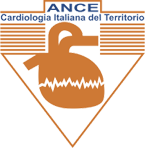Rubriche
ANCE – Rinnovo eletttivo cariche/quadri nazionali ANCE triennio 2025-2028
MODULO PRESENTAZIONE CANDIDATURA CIRCOLARE ai SOCI ANCE - INFORMATIVA...
BANDO COMPONENTE COMITATO SCIENTFICO
CANDIDATURA A COMPONENTE DEL COMITATO SCIENTIFICO INTERNO. A breve, data termine presentazione domanda. Inviare la domanda compilata a: segreteria.direzione@ancecardio.it Scarica il bando Scarica il fax simile...
L’ INTELLIGENZA ARTIFICIALE IN CARDIOLOGIA
MAURIZIO BARONI Bologna, cardiologo libero professionista, segretario regionale ANCE Emilia-Romagna, vicepresidente regionale SIT Emilia-RomagnaScarica articolo L’intelligenza artificiale (IA) sta entrando sempre di più nell’ambito medico tanto da modificare e...
Iscrizione A.N.C.E. – Cardiologia Italiana del Territorio: SEZIONE REGISTRO UNICO NAZIONALE TERZO SETTORE
(rep. n. 142031, CF 94013530483) nella sezione Registro Unico Nazionale del Terzo Settore, art 22 Iscrizione A.N.C.E. - CARDIOLOGIA ITALIANA DEL TERRITORIO? (rep. n. 142031, CF 94013530483) nella sezione Registro Unico Nazionale del Terzo Settore, art 22 del D....

Most physician readers of Aro’s and Chugh’s elegant review of electrical and anatomic types of LVH and the implications will be puzzled by the concepts that electrical LVH (ECG/LVH) and anatomic LVH (echo/LVH and MRI/LVH) might be different entities, and that patients may have one form without the other. These concepts have been evolving over the past decade, and are perhaps most succinctly presented in the second report of the working group on the ECG diagnosis of LVH.1 Their mutual independence should not be too surprising when their origins are considered. The “anatomic” varieties of LVH are based on imaging techniques that are directly related to cardiac mass and configuration, whereas the “electrical” variety is a record of the sum of effects of the flow of ions across many individual myocardial cell boundaries in a specific sequence. Why should these very disparate methods produce the same result? The evolving evidence favors the conclusion that ECG/LVH may not directly relate to ventricular mass at all, but the relationship with LV mass and with anatomic LVH develops through their common relationship to a yet undefined pathophysiological state (or multiple states) that leads to LVH. The anatomic methods provide a better indication of LV mass, while the electrical method seems to be better as a predictor of CV risk and future CV disease.
My own group has recently demonstrated that each of the six ECG abnormalities used in deriving the Romhilt-Estes score, used for decades to “diagnose” LVH, is independent of the other five in prediction of CV diseases and CV mortality.2 Could each ECG abnormality be an electrical marker, indicating a separate and distinct pathophysiological process? Could these ECG abnormalities enable earlier diagnosis of genetic defects at the myocardial cell level that lead to myocardial fibrosis or other states that lead to myocardial dysfunction, arrhythmias, and hypertrophy? My own personal guess is that it is not hypertrophy that causes cardiac dysfunction, but it is the underlying pathophysiological state, and that the observations in the featured article should be viewed as important and as the forerunner of other observations regarding this new understanding of heart disease and its progression.
References